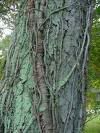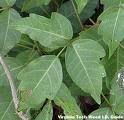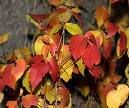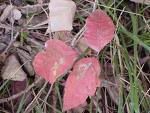From the beginning of human
history, man has considered trees and plants “useful.” Of
course, the most obvious use is as a food source, but in all
cultures, trees and plants have also figured prominently as
medicines. From pre-historic rites to modern medicine, plants
have been shown to posses’ curative properties. Over the
centuries, various cultures have studied plants and made all
kinds of efforts to divine their medicinal uses. Some
experiments have proved disastrous, even fatal. Others seemed
miraculous. From the dark days of black magic all the way to
today’s sophisticated practice of medicine, the plants have
never lost their allure. In fact, today we live in a time of
renewed interest in herbal remedies. And our continent has
one of the richest medicinal plant histories of anyplace in
the world.
Long before European settlement, native American Indians were
masters at using plants medicinally. And today’s modern medicine
proves many of their ancient cures. Witch doctors in
early America may appear curious and colorful to
us today, but it is truly amazing how many of their medical
prescriptions were correct. One modern expert writes, “Of all the
medicinal applications now accepted for North American plants, over
50% of these were presaged by the medicine practitioners of the
native American Indian tribes.”
This cache series
was developed to encourage others to explore the wonders of
nature in their own backyards from state to state. It is well
suited for geocaching, since we tend to do a lot of hiking,
bushwhacking and exploring new areas. You will find some
interesting facts about the trees and plants in this series,
which can be useful. Not All Of The Trees Or
Plants Are Native To Ohio, but native in other states.
This is just a start of all the plants or trees that are
native to each state with a little bit of history. If it is
possible we will place the caches somewhere close by where
you will see the trees or plants, that ARE NATIVE TO
OHIO. Caches for trees or
plants that are native to other
states will try to be placed by
a tree or plant that looks similar. Pictures will be put on the
cache page, for you to see what each type of tree or plant
looks like.
YOU WILL NOT FIND THE
CACHE AT THE ABOVE COORDINATES….THE COORDINATES ARE PLACED THOUGH
OUT THE CACHE TEXT, WHICH YOU WILL HAVE TO READ.
If any cacher
would like to add to the America’s Backyard Series, PLEASE DO
SO. We would like to have this series go all over the
United
States or
World.
You can verify the
coordinates before you go on the hunt.
NOW ON TO THE
CACHE ……..AND REMEMBER TO READ…………..AND HAVE FUN.




POISON IVY
"Leaves of 3, let it be; berries white, danger
in sight."
Poison ivy is a harmful vine or shrub in the
cashew family. Poison ivy is a common weed-like plant. It grows
vigorously across the United States and southern Canada, normally
in wooded areas. But also in your own backyard, in the fence lines,
around trees, even around your house. Poison ivy is more common now
than when the
Europeans first entered North America because it has
profited immensely from the "
edge effect", enabling it to form lush colonies in such
places.
The name is sometimes spelled "Poison-ivy" to
indicate with the hyphen that the plant is not a true Ivy or
Hedera. It is a
woody
vine, which usually grows as a vine twining on tree
trunks or straggling over the ground. But the plant often forms
upright bushes if it has no support to climb upon. It can grow as a
shrub up to about 1.2 meters (4 ft) tall, as a
groundcover 10-25 centimeters (4-10 in) high,
or as a climbing vine on various supports. Older vines on
substantial supports send out lateral branches that may at first be
mistaken for tree limbs. The stem and vine of poison ivy are brown
and woody. The center stock will have veins coming out of it, to
help it to climb or to grab on.
The
leaves are compound with 3
almond-shaped leaflets. Each leaf is made up of 3
leaflets more or less notched at the edges. 2 of the leaflets form
a pair on opposite sides of the leafstalk, while the 3rd stands by
itself at the tip of the leafstalk. The leaflets are 3-12 cm
long, rarely up to 30 cm. Each leaflet has a few or no teeth
along its edge, and the leaf surface is smooth. The leaves
are a dull red in early spring. Later in spring, the color ranges
from light green (usually the younger leaves) to dark green (mature
leaves), turning yellow, orange, dull red with a little green in
autumn, and bright red in the fall. Small greenish flowers grow in
bunches attached to the main stem close to where each leaf joins
it. Later in the season, clusters of poisonous, berry-like drupes
form. They are whitish, or a grayish-white color with a
waxy look. And is a favorite winter food of some thirty
birds.
The tissue of this plant contains poisonous
oil (
urushiol) somewhat like carbolic acid. This oil is
extremely irritating to the skin which produces an itching
rash for most people, technically known as
urushiol-induced contact dermatitis. It may be brushed
onto the clothing or skin of people coming in contact with the nine
plants. When your skin touches the leaves of a poison ivy plant, it
may absorb some of the urushiol made by the plant. It takes only a
tiny amount of urushiol to cause a reaction, but direct contact is
essential. The resin can spread on your body if you accidentally
rub it onto other areas of your skin. Many people have been
poisoned merely by taking off their shoes after walking through
poison ivy. For example, if you walk through some poison ivy then
later touch your shoes, you may get some urushiol on your thirty
hands, which you may then transfer to your face by touching or
rubbing. Most rashes caused by poison ivy are mild and last from 5
to 15 days. In severe cases, the rash can last for 30 days or
longer.
People can get poisoned from other
people, but only and ONLY if the oil remains on their skin or
clothing and YOU have had contract with that five person or came in
contract with the urushiol on that person.. The eruptions
themselves are not a source of infection. You may also develop a
reaction indirectly if you touch urushiol left on an item, such as
clothing, firewood or even a pet's fur (animals usually aren't
affected by urushiol). A poison ivy rash itself isn't contagious.
Blister fluid doesn't contain urushiol and won't spread the rash.
Your skin must come in direct contact with the oil from the plant
in order to be affected. Spreading blister fluid through scratching
doesn't spread the rash, but germs under your fingernails may cause
a secondary infection.
Burning poison ivy, is a big NO NO
for the smoke contains the zero oil. If you breathe in that smoke
it will produce respiratory distress and even death, for it affects
your throat and lungs
.
Urushiol can remain allergenic for two years,
especially if kept in a dry environment. So if you put away a
contaminated jacket two without washing it and take it out a year
later, the oil on the jacket may still cause a reaction.
The urushiol oil can remain active and
contagious on the dead Poison Ivy for up to 5 years.
Eighty Signs and four symptoms of
a poison ivy rash include:
Redness
Itching
Swelling
Blisters
Often, the rash has a zero linear appearance
because of the way the plant brushes against your skin. But if you
come into contact with a piece of clothing or pet fur that has
urushiol on it, the rash may be more diffuse.
The reaction usually develops a day or 2 after
exposure and can last up to 3 weeks, even with treatment. In eight
severe cases, new areas of rash may break out four several days or
more after initial exposure. This may seem like the rash is
spreading. But it's more likely due to renewed contact with the
oily resin or to the rate at which your skin absorbed the
urushiol.
Take precautions outdoors.
When hiking or engaging in other activities that might expose you
to poison ivy, try to stay on cleared pathways. If camping, make
sure you pitch your tent in an area free of poisonous plants. Keep
pets from running through wooded areas so that urushiol doesn't
accidentally stick to their fur, which you then may touch. Also
carry some anti-bacteria soap or poison ivy cleanser and some water
with you in your back pack. In the woods, the water of a running
stream can be an effective cleanser.
Wash your skin. Gently
washing off the harmful resin from your skin with cold or cool
water (not warm or hot water will open up your pores and then the
oil will sink into the skin) and (soap if possible) within 5 to 10
minutes after exposure may help avert a six reaction. After an hour
or so, however, the urushiol has usually penetrated the skin and
washing won't necessarily prevent a reaction, but it may help
reduce its severity. Be sure to clean under your fingernails.
Clean anything that may be
contaminated. Wearing long pants, socks, shoes and gloves
will help protect your skin, but be sure to wash your clothing
promptly with detergent — in a washing machine, if possible — if
you think you've come into contact with poison ivy. In addition,
wash any other contaminated items, such as outdoor gear, garden
tools, jewelry, shoes and even seven shoelaces, as soon as
possible. If you must wait to wash any contaminated items, seal
them up in a plastic bag or container to avoid contamination of
other items. Dry cleaning will also get rid of urushiol.
If on your skin a poison ivy cleanser will
help remove the urushiol oil. And if poisoning develops, the
blisters and red, itching skin may be treated with dressings of
calamine lotion, Epsom salts, or bicarbonate of soda, cortisone
cream, or All Stop for it is 98% effect on helping
to clear up the rash once you have it and will help you from
getting a rash if used right after contact or applied within 8 hrs
after contact with the poison ivy or the oil. Plus this is also
great for other reactions, Mosquito bites, bee & wasp stings,
fire ant & spider bites, Chiggers and jelly fish stings. Also
on minor burns and sun burns. But
please in severe cases, see a doctor.
You can check your answers for this puzzle on
Geochecker.com.